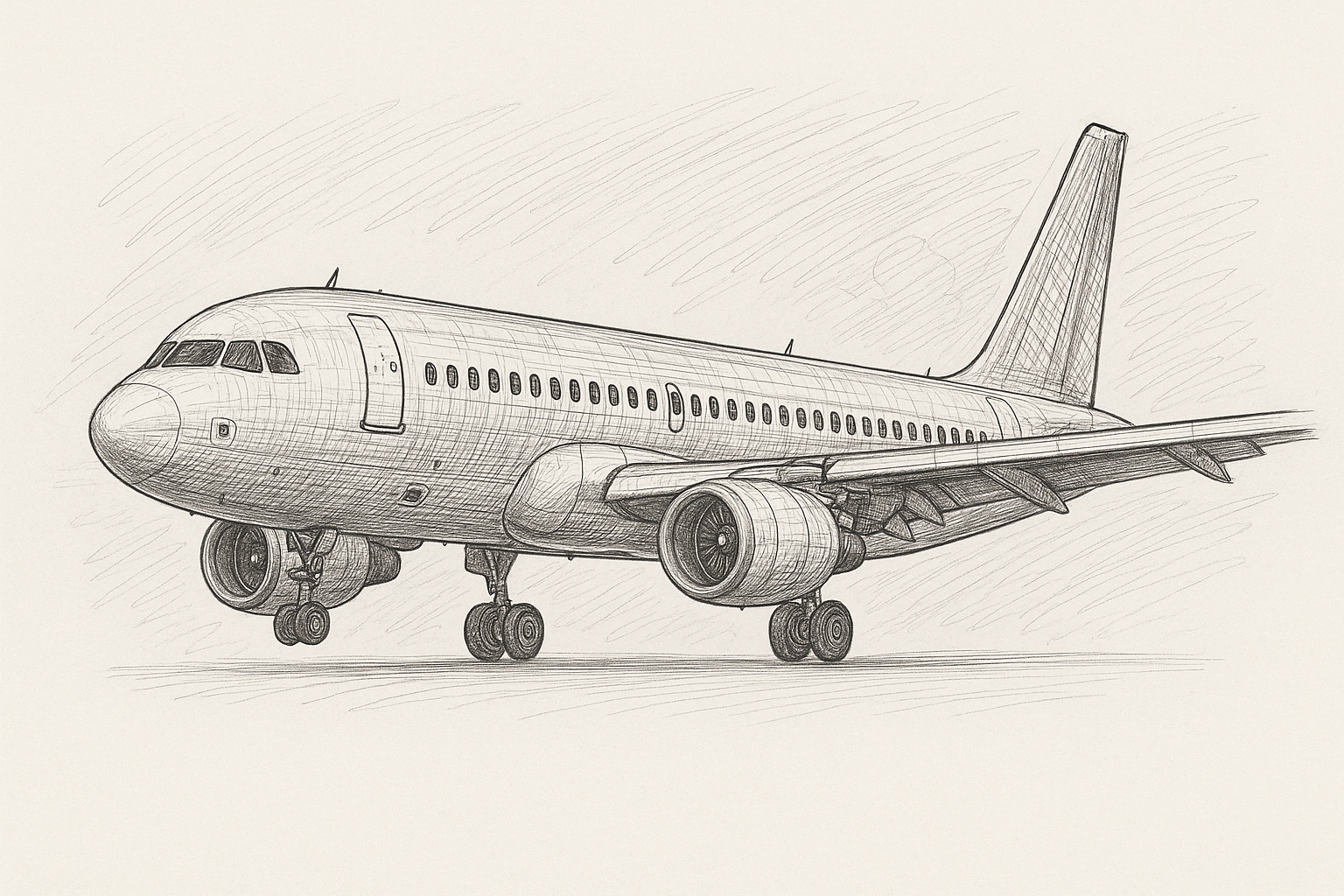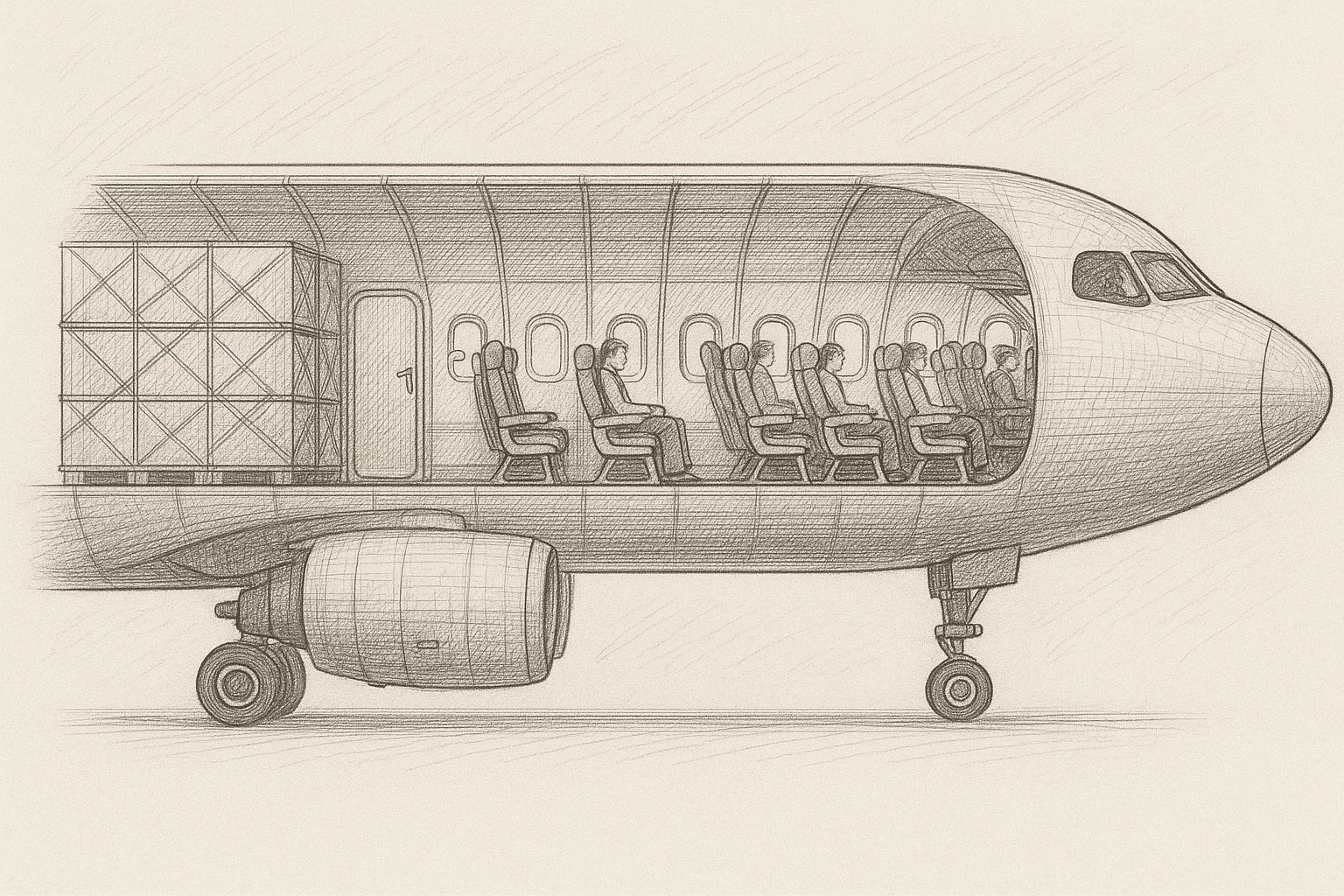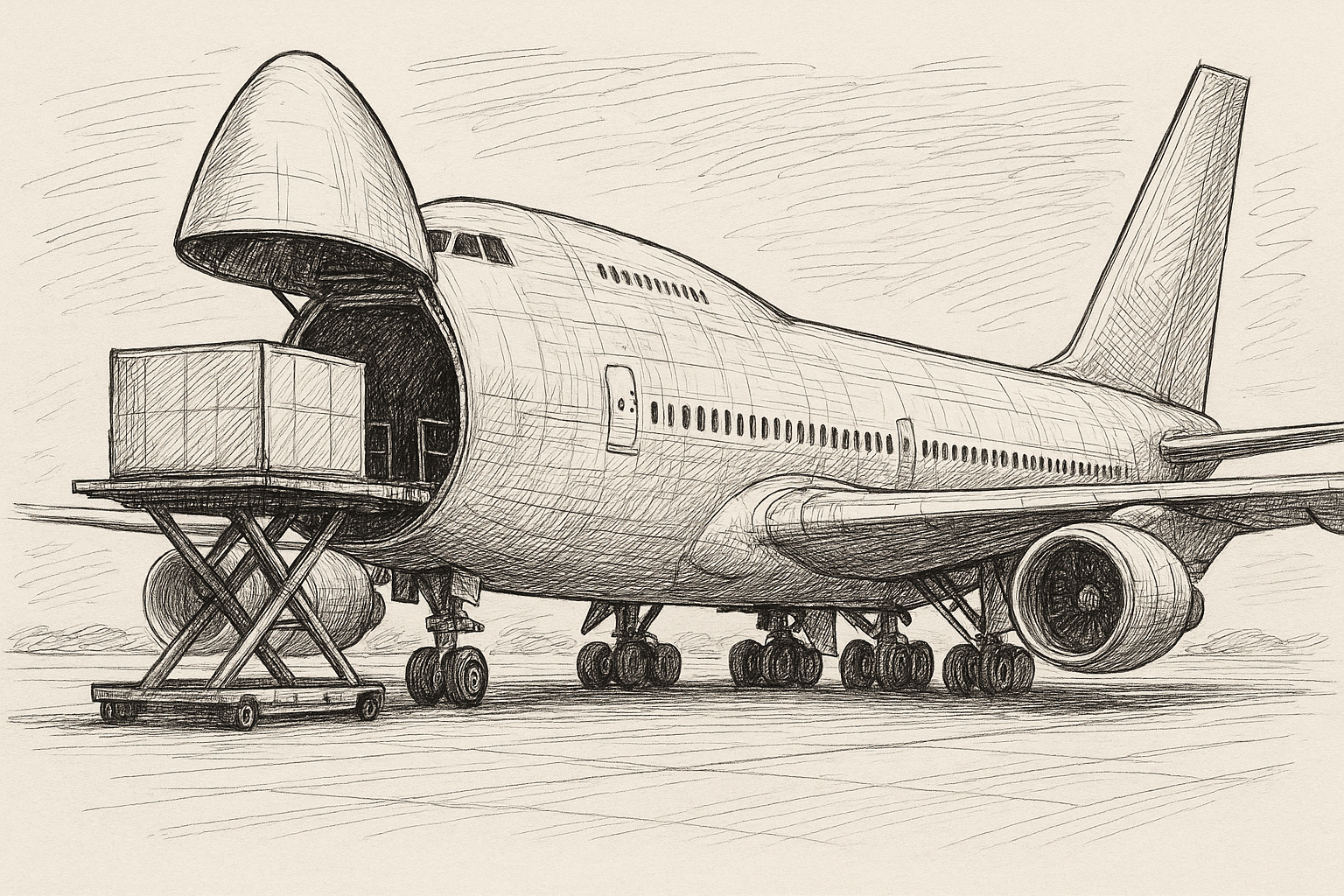There are three main types of aircraft used in air cargo transportation, each serving different logistics needs:
Passenger Aircraft
These planes are primarily designed to carry passengers, with full seating across the main and upper decks (in larger aircraft). The cargo is stored in the aircraft’s lower deck, often referred to as “belly cargo.” While this space is mainly used for passengers’ checked
baggage, it can also accommodate small cargo shipments. Many airlines use this space to transport parcels as an additional revenue stream beyond ticket sales.

Combi Aircraft (Passenger & Cargo Combination)
Combi aircraft are configured to carry both passengers and cargo on the same flight. Part of the aircraft is designated for passenger seating, while the remaining area—typically at the rear or under the floor—is used for cargo. Though not as widely used today due to
safety and regulatory limitations, combi aircraft are still found on select routes where flexibility is needed. Airlines operating both passenger and cargo services may be referred to as combined carriers.

Freighters or Dedicated Cargo Aircraft
Freighters are aircraft designed exclusively for transporting cargo, with no passenger seating. This allows for full utilization of the cargo space, making them ideal for large, heavy, or specialized shipments. Many major logistics companies operate dedicated freighter fleets—such as FedEx, UPS, DHL, Qatar Cargo, and Cargolux. These carriers
are often members of global associations such as IATA Cargo or The International Air Cargo Association (TIACA).

Freighter aircraft come in various models depending on capacity and range, including the Boeing 747-8F, Boeing 777F, and Airbus A330-200F. They feature advanced cargo handling systems and support efficient loading and unloading for high-volume shipments.
Note: The type of aircraft selected for a shipment depends on factors such as cargo volume, weight, urgency, and destination—ensuring the best combination of speed, safety, and cost efficiency.
